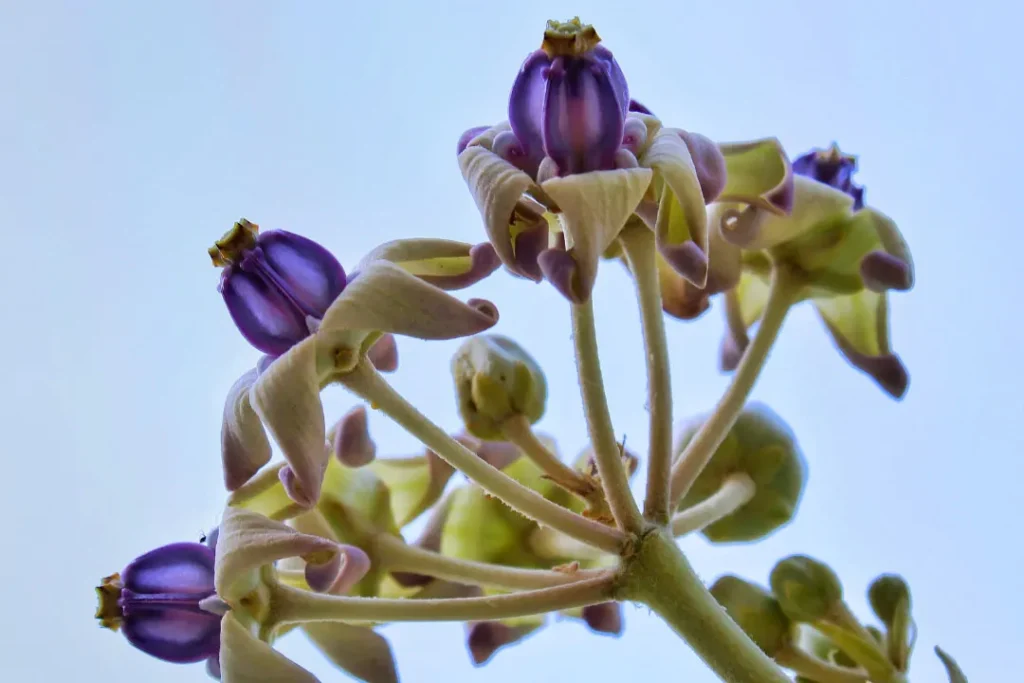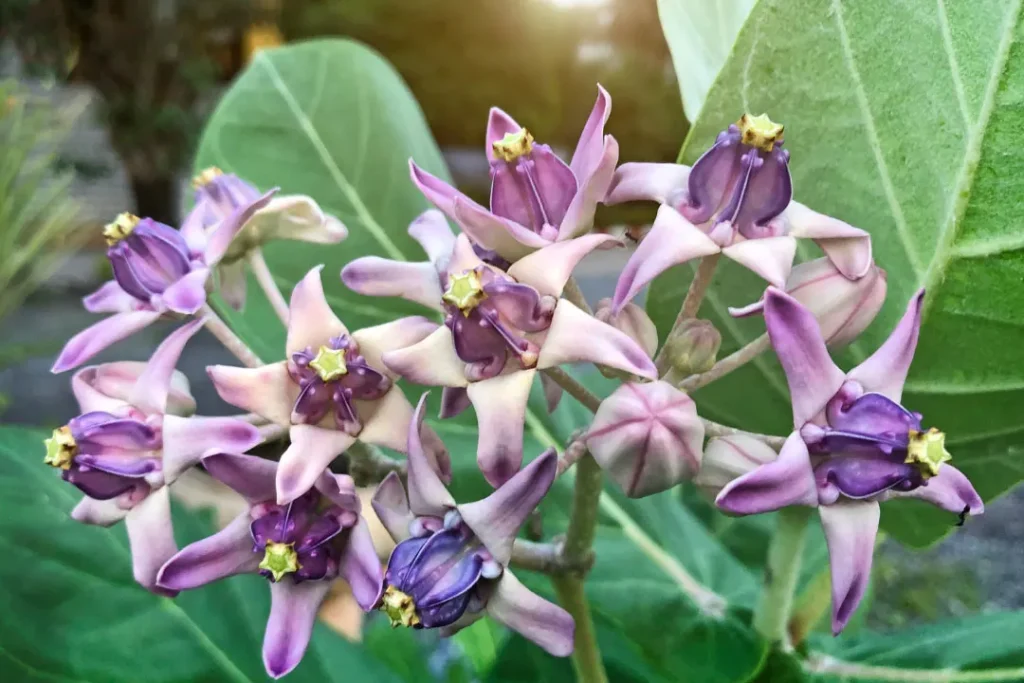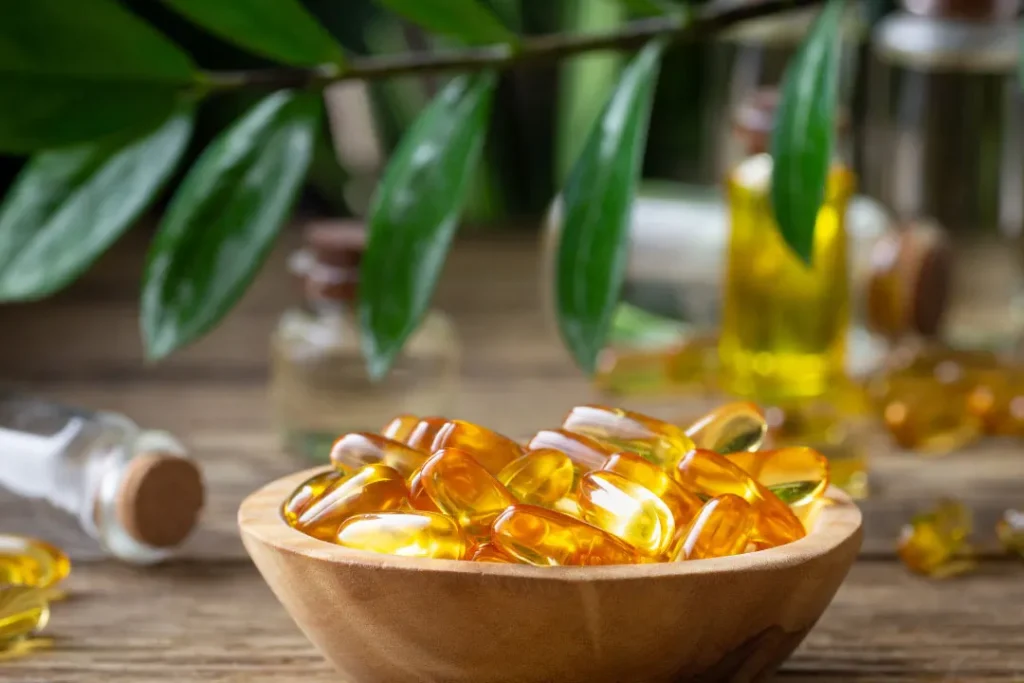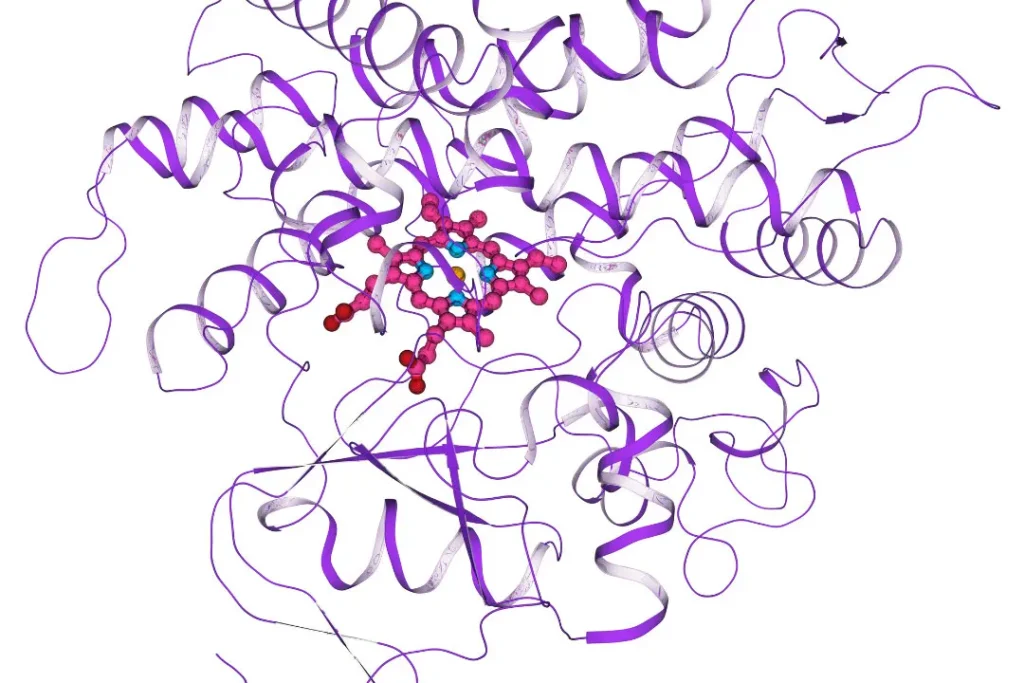Calotropis procera, sometimes referred to as calotropis or giant milkweed, is a perennial shrub that is a member of the Apocynaceae family. Africa, Asia, and the Middle East are among the tropical and subtropical locations where it is indigenous. The plant is renowned for its wide range of pharmacological qualities and has a long history of usage as a traditional medicine. The goal of this page is to provide you with a thorough description of calotropis, including its nature, health advantages, recommended dose, negative effects, possible drug interactions, and appropriate usage.
You May Also Like:
5 Great Reasons to Try Alpha GPC for Brain Health
Thiamine (s B1): Benefits, Dosage, Side Effects, Drug Interactions, and Other Important Information
Nature of Calotropis:
Calotropis procera, often known simply as calotropis, is a perennial shrub in the family Apocynaceae. Africa, Asia, and the Middle East are among the tropical and subtropical locations where it is indigenous. Both the plant’s gorgeous, showy blooms and broad, lanceolate leaves serve as distinguishing features. Calotropis shrubs grow to a height of 5 meters and have a robust root system.
The plant’s therapeutic qualities are a result of numerous bioactive substances it contains, with alkaloids, flavonoids, terpenoids, glycosides, and cardiac glycosides being just a few of them. These substances, which have been the focus of countless scientific investigations, help explain the plant’s medical benefits. Alkaloids, which are nitrogenous organic substances, are well-known for their physiological effects on the human body. Flavonoids, a group of plant pigments, have anti-inflammatory and antioxidant effects. Terpenoids are a broad class of substances with a variety of biological properties, including antibacterial and anticancer actions. Cardiac glycosides, which are substances with a sugar molecule linked to a non-sugar component, primarily affect heart function.
Various civilizations have historically used calotropis as a traditional medicine. The medicinal properties of the plant’s leaves, stems, roots, and flowers have all been used in various ways. The plant has been used as an antivenom for snakebites as well as to cure maladies including skin infections, wounds, gastrointestinal difficulties, respiratory issues, and wound healing.
According to research, calotropis contains a variety of pharmacological effects. The plant’s alkaloids have shown analgesic, anti-inflammatory, and antipyretic properties that may help lessen pain, inflammation, and fever. Antioxidant flavonoids present in calotropis protect cells from oxidative damage brought on by free radicals. Because terpenoids have shown antibacterial and antiparasitic properties, calotropis may be used as a natural treatment for infections.

Scientific interest in the existence of cardiac glycosides in calotropis comes as a result of its possible effect on cardiovascular health. These substances have shown beneficial inotropic effects, which means they may strengthen heart contractions, possibly helping people with certain cardiac diseases. It is crucial to remember that owing to their possible toxicity and constrained therapeutic window, the usage of cardiac glycosides should be done so with care and under medical supervision.
Calotropis has the ability to cure wounds as well. The plant’s extracts have been shown to increase collagen production, encourage tissue regeneration, and have antimicrobial properties. These processes aid in the quick healing of wounds and might be used in the creation of new wound care products.
Health Benefits of Calotropis:
Due to the inclusion of flavonoids and alkaloids, calotropis has shown promise as an anti-inflammatory agent. Inflammation in the body is decreased by these substances because they prevent the production of pro-inflammatory mediators. The bioactive components of calotropis also have antioxidant capabilities that shield cells from the oxidative damage brought on by free radicals. This antioxidant activity may help explain why the plant has the ability to fight cancer and cardiovascular illnesses.
Calotropis extracts have long been used to treat and heal external bodily damage. According to studies, the plant’s bioactive components are great for your skin, encouraging tissue regeneration and collagen production while possessing antimicrobial qualities, hastening the healing of wounds. To further the healing benefits discourse, calotropis shown promise as an anticancer drug in pre-clinical research. Some of the plant extract’s constituents have been shown to have cytotoxic effects on cancer cells and the capacity to suppress tumor development. To evaluate their effectiveness and safety for human usage, however, further study is required.


Chemistry of Calotropis:
Numerous bioactive substances found in Calotropis help explain why it has therapeutic qualities.
- Alkaloids: Alkaloids are chemical compounds with nitrogen whose physiological effects on the body are well-known. Calotropin, calotropagenin, uscharidin, and calotoxin are a few of the alkaloids found in calotropis. It has been discovered that these alkaloids have analgesic, anti-inflammatory, and antipyretic properties.
- Flavonoids: A family of plant pigments known as flavonoids has anti-inflammatory and antioxidant activities. Flavonoids including kaempferol, quercetin, and rutin are present in calotropis. These flavonoids support the plant’s antioxidant function, which guards cells against oxidative damage brought on by free radicals.
- Terpenoids: Terpenoids are a broad class of chemical substances that are present in plants and have a range of biological functions. Terpenoids such calotropin, calotropagenin, and calotropisid A are found in calotropis. The terpenoids in question have shown antibacterial, antiparasitic, and anticancer properties.
- Glycosides: Glycosides are substances made up of a sugar molecule connected to a non-sugar component, and calotropis includes these substances. Calotropin and calotoxin are two cardiac glycosides found in calotropis, which affect heart function. These substances have beneficial inotropic effects, meaning they make heart contractions stronger.
Physiological Mechanisms of Action:
Calotropis works to reduce inflammation through a number of different ways. The alkaloids and flavonoids in Calotropis prevent the production of cytokines and prostaglandins, two pro-inflammatory mediators. This aids in reducing bodily inflammation and easing its effects.
Calotropis is also antioxidant-rich, aided by the flavonoids it contains. Scavenging free radicals, they counteract their negative effects and shield cells from oxidative damage. The prevention of chronic illnesses and the promotion of general health depend on this antioxidant activity.
For years, calotropis has long been used to treat wounds. Flavonoids and terpenoids are two examples of the bioactive substances found in calotropis that also have antibacterial and tissue regeneration-promoting characteristics. Calotropis is ideal for those who work in positions that are physically taxing and may result in the occasional cut, scrape, or burn. These systems facilitate tissue regeneration and lower the risk of infection while accelerating wound healing.
As mentioned briefly before, the heart is positively inotropically affected by the cardiac glycosides included in calotropis. They strengthen heart contractions by increasing the contractile force of cardiac muscle cells. This enhances cardiac output and circulation, which might be advantageous for those with certain heart diseases.
It is crucial to keep in mind that the precise physiological processes through which calotropis works may change based on the bioactive substances present and the particular health issue being treated. To completely comprehend the methods by which calotropis exerts its effects on the body and brain, further study is required.
Optimal Dosage of Calotropis:
To guarantee both effectiveness and safety, it is essential to determine the ideal dose of calotropis. It is crucial to remember that there have only been a few scientific research on calotropis dosage, and that the recommended dose may change based on the administration method and the particular health condition being treated. Before beginning any supplementation program, speak with a certified herbalist or your healthcare provider who is experienced in the usage of calotropis.


Side Effects of Calotropis:
When taken carefully, calotropis is usually regarded as safe for ingestion; however, it might introduce unwanted consequences. After using calotropis, some people may have gastrointestinal symptoms such nausea, vomiting, or diarrhea. Rarely, allergic responses, such as skin rashes or itching, have also been documented. It is advised to stop using and get medical help if any negative side effects happen.


Potential Substance Interactions:
There may be interactions between calotropis and certain drugs or substances. Before introducing calotropis into their regimen, those who use prescription medications should check in with their doctor as a precaution. The cytochrome P450 enzymes have been demonstrated to be inhibited by calotropis extracts, which may have an impact on the metabolism and potency of certain medications. Additionally, due to the possibility of interactions, care should be used while using calotropis with other herbal supplements.


Responsible Uses of Calotropis:
According to conventional indigenous wisdom and ongoing medicinal research, calotropis may be used topically or in the form of herbal teas, tinctures, or other preparations. To guarantee consistency in potency and safety, however, quality control and regulated extraction techniques are essential.
Additional scientific study is required to fully investigate the potential of calotropis and to substantiate its traditional usage. Clinical trials, toxicity profiles, and comprehensive research on pharmacokinetics may all be used to develop evidence-based standards for its appropriate usage.
Calotropis:
Conclusion
A multi-use plant with both medicinal and industrial history, calotropis is an antioxidant-dense substance that can benefit people with heart conditions, skin concerns, and potentially cancer prevention. People who work in physically stressful environments will find calotropis to be a welcome addition to their daily routine. As studies continue, we will have a firmer grasp on the benefits and further uses of calotropis. For now, the plant can be used in a powdered supplement form, herbal tea, or other consumptive methods as outlined by your medical provider.
References:
- Effects of adaptogens on the central nervous system and the molecular mechanisms associated with their stress-protective activity. Retrieved From: https://www.mdpi.com/1424-8247/3/1/188
- Wound healing potential of Calotropis procera in experimental models. Retrieved From: https://www.researchgate.net/publication/274912640_Wound_healing_potential_of_Calotropis_procera_in_experimental_models
- Antioxidant and Antibacterial Activities of Calotropis procera Linn. Retrieved from: https://www.researchgate.net/profile/Sarder-N-Uddin/publication/284578673_Antioxidant_and_antibacterial_activities_of_Calotropis_procera/links/53d152930cf228d363e5bc02/Antioxidant-and-antibacterial-activities-of-Calotropis-procera.pdf
Important Note: The information contained in this article is for general informational purposes only, and should not be construed as health or medical advice, nor is it intended to diagnose, prevent, treat, or cure any disease or health condition. Before embarking on any diet, fitness regimen, or program of nutritional supplementation, it is advisable to consult your healthcare professional in order to determine its safety and probable efficacy in terms of your individual state of health.
Regarding Nutritional Supplements Or Other Non-Prescription Health Products: If any nutritional supplements or other non-prescription health products are mentioned in the foregoing article, any claims or statements made about them have not been evaluated by the U.S. Food and Drug Administration, and such nutritional supplements or other health products are not intended to diagnose, treat, cure, or prevent any disease.
